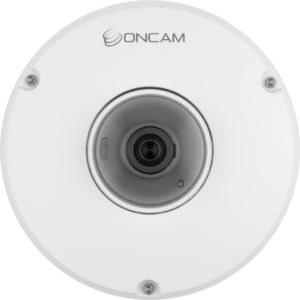Border Surveillance is important for national security. India’s experience at Siachen, Kargil and now at Ladakh is an eye opener for the government to implement strict border surveillance measures, governments are deploying AI to actively track citizens. In India too, the government is actively utilising surveillance tools. The main challenge is to cover vast areas with no habitants. The way border surveillance is done today is via patrolling and fixed forward posts. It is costly, tough and can result in loss of lives. It does not give complete coverage of all the areas all the time. The objective of surveillance is to detect movements and not identify faces. One way to achieve it is by using thermal cameras for all weather applications. The second effective way is to use 360 degree optical cameras which provide constant view over vast areas.
The Maharashtra government recently deployed the technology in Mumbai, where it will be integrated with the 10,000-strong contingent of CCTV cameras. Police in Delhi, Amritsar, and Surat have been using facial recognition since as early as mid-2018. Recently, the Bengaluru traffic department too, has announced that the signals shall be operated on AI.
With its neighbor producing world-class AI-based monitoring systems, the Indian army is exploring various image recognition technologies that can replace patrolling on foot at the Chinese frontier.
According to the national strategy report released by NITI Aayog, last June, on the use of AI, monitoring and surveillance systems occupied a significant portion. For instance, the banking sector has been highlighted for the potential use cases in the AI domain.
1. Oncam– Oncam is an independent manufacturer specialized in single sensor 360-degree cameras and video surveillance technology which is used by offices, schools and more. By enabling high-resolution recording of the entire fisheye view, independent of what an operator is doing, images can be processed during playback as if they were live images. During playback, images can be dewarped and virtual cameras can be generated enabling the viewer to pan, tilt and zoom around the entire scene

2. Crons System– Gurugram-based CRON Systems is developing IoT-based products to help the armed forces deploy border security solutions. initially began focusing on building laser walls for the Border Security Force (BSF). But it eventually expanded its products and services to include automation for drones, rovers, and a central dashboard to control the applications through its command, control, communication & information (C3i). the Kavach security system uses multiple sensors such as time of flight cameras, mmWave radars and LiDARs to help ‘detect, track and classify’ intrusion upto 150 m ahead of the perimeter. The system gives early warning signals before the intrusion even takes place.
3. Asteria Aerospace –Asteria Aerospace is a robotics and artificial intelligence startup, which provides drone-based solutions to the military, paramilitary, and police forces for security and surveillance purposes. The startup also deploys its drones to provide end-to-end solutions for autonomous surveys, inspection, and to monitor assets in industries working in the oil and gas, mining, construction and agriculture sectors. Apart from working with the border security force, the startup works with paramilitary agencies and several state police forces.
4. VINVELI – The startup is involved in building Unmanned Aerial Vehicles (UAV) for both commercial and defence purposes. Vinveli, which counts the Ministry of Defence and Ministry of Home Affairs as its clients, deploys its drones for riot control and combat operations. It also deploys them for commercial use in agricultural and wind farms.
5. Optimized Electrotech– Optimized Electrotech is an electro-optic startup that provides security and surveillance solutions. The startup provides electro-optics system, which can be used for the surveillance of smart cities, satellite-based imaging, border surveillance, medical imaging, access control, machine vision, automotive (Advanced driver-assistance systems, i.e., ADAS) and consumer electronics.